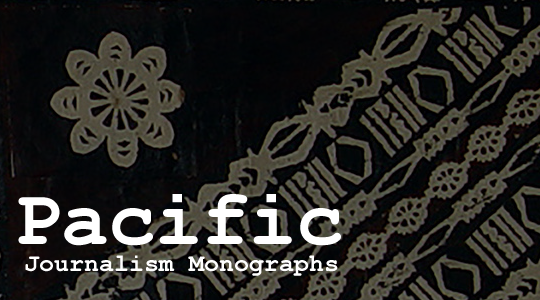Pandemic in the complexity of the Digital Era: How online media in Indonesia construct the reality of COVID-19
Abstract
This article aims to examine the reality of the COVID-19 pandemic constructed by online media outlets in Indonesia as one of the primary sources of information during the crisis. It uses qualitative content analysis to determine how online media in Indonesia construct the reality of COVID-19. The country’s eight most accessed online media websites are the objects of this study with a three-unit analysis: context, message and tone. The result shows that Indonesian media coverage has predominantly emphasised the pandemic’s political context over the health and economic context. Informants have predominantly been politicians; epidemiologists and scientists have been given little space. In this case, the media system in Indonesia through online news media were not able to play an optimal role in the early phases of the pandemic due to the tendency of this news construction.
Downloads
Metrics
References
Albæk, E. (2011). The interaction between experts and journalists in news journalism. Journalism, 12(3), 335–348. DOI: https://doi.org/10.1177/1464884910392851
Ambardi, K., Parahita, G., Lindawati, L., Sukarno, A., & Aprilia, N. (2014). Mapping digital media: Indonesia. Washington, DC: Open Society Foundations.
Atkinson, C. (2020). G20 leaders must answer to COVID-19, Science, 368 (6487), 111. https://doi.org/ 10.1126/science.abc1025 DOI: https://doi.org/10.1126/science.abc1025
Aulia, F.M., Maliki, Asadullah, M.N. (2020, May 15). Without intervention, model shows COVID-19 will drag at least 3.6 million Indonesians into poverty. The Conversation. Retrieved from https://theconversation.com/without-intervention-model-shows-covid-19-will-drag-at-least-3-6-million-indonesians-into-poverty-138305
Bakir, V. (2010). Media and risk: old and new research directions. Journal of Risk Research, 13(1), 5-18. https://doi.org/10.1080/13669870903135953 DOI: https://doi.org/10.1080/13669870903135953
Barry, J. M. (2009). Pandemics: Avoiding the mistakes of 1918. Nature, 459, 324–325. https://doi.org/10.1038/459324a DOI: https://doi.org/10.1038/459324a
Bennett, H. (2020, March 19). Spanish flu and the history of pandemic propaganda. Prospect. Retrieved from https://www.prospectmagazine.co.uk/politics/coronavirus-spanish-flu-1918-pandemic-from-spain
Berry, T.R, Wharf-Higgins, J., & Naylor, P.J. (2007). SARS wars: An examination of the quantity and construction of health information in the news media. Health Communication, 21(1), 35-44. https://doi.org/10.1080/10410230701283322 DOI: https://doi.org/10.1080/10410230701283322
Castells, M. (2009). Communication power. Oxford, UK: Oxford University Press.
Chang, C. (2012). News coverage of health-related issues and its impacts on perceptions: Taiwan as an example. Health Communication, 27(2), 111-123. https://doi.org/10.1080/10410236.2011.569004 DOI: https://doi.org/10.1080/10410236.2011.569004
Covello, V.T., (2009). Strategies for overcoming challenges to effective risk communication. In R.L. Heath & H.D. O’Hair (Eds.). Handbook of risk and crisis communication (pp. 143-167). London, UK: Routledge. DOI: https://doi.org/10.4324/9781003070726-9
Djauhar, A. (2019). Menjaga jurnalisme, bukan sekadar ‘bisa hidup’, Jurnal Dewan Pers, 20, 6-8.
Duong, D.M., Le, V.T., Ha, B.T.T. (2020). Controlling the COVID-19 pandemic in Vietnam: Lessons from a limited resource country Asia Pacific, Journal of Public Health, 32(4), 161–162. https://doi.org/10.1177/1010539520927290 DOI: https://doi.org/10.1177/1010539520927290
Flanagan, E. (2020, March 14). Spanish flu: How Belfast newspapers reported 1918 pandemic. BBC World News. Retrieved from https://www.bbc.com/news/uk-northern-ireland-51818777
Getchel, M., Richmond, D.S., Woods, C., Williams, G., Hester, E., Seeger, M., & Sellnow, T. (2018). Competing and complementary narratives in the ebola crisis. In H.D. O’Hair (Ed.), Risk and health communication in an evolving media environment (pp. 316-334). London, UK: Routledge. DOI: https://doi.org/10.4324/9781315168821-16
Hallahan, K (2009). Crises and risk in cyberspace. In R.L. Heath & H.D. O’Hair (Eds.). Handbook of risk and crisis communication (pp. 412-445). London, UK: Routledge. DOI: https://doi.org/10.4324/9781003070726-23
Haynes, S. (2020, March 27). ‘You must wash properly.’ Newspaper ads from the 1918 flu pandemic show some things never change. Time magazine. Retrieved from https://time.com/5810695/spanish-flu-pandemic-coronavirus-ads/
Heath, R.L., & O’Hair, H.D. (2009). The significance of crisis and risk communication. In R.L. Heath & H.D. O’Hair (Eds.). Handbook of risk and crisis communication (pp. 143-167). London, UK: Routledge.
Ho, S.S. (2012). The knowledge gap hypothesis in Singapore: The roles of socioeconomic status, mass media, and interpersonal discussion on public knowledge of the H1N1 flu pandemic. Mass Communication and Society, 15(5), 695-717. https://doi.org/10.1080/15205436.2011.616275 DOI: https://doi.org/10.1080/15205436.2011.616275
Holland, K., Blood, R.W., Imison, M., Chapman, S., & Fogarty, A. (2012). Risk, expert uncertainty, and Australian news media: public and private faces of expert opinion during the 2009 swine flu pandemic. Journal of Risk Research, 15(6) 657-671. DOI: 10.1080/13669877.2011.652651 DOI: https://doi.org/10.1080/13669877.2011.652651
Holmes, B.J., Henrich, N., Hancock, S., & Lestou, V. (2009). Communicating with the public during health crises: experts’ experiences and opinions, Journal of Risk Research, 12(6), 793-807. https://doi.org/10.1080/13669870802648486 DOI: https://doi.org/10.1080/13669870802648486
Jones, J. H., & Salathé, M. (2009). Early assessment of anxiety and behavioral response to novel swine-origin influenza A(H1N1). PLoS ONE, 4(12), e8032. https://doi.org/10.1371/journal.pone.0008032 DOI: https://doi.org/10.1371/journal.pone.0008032
Jorgensen, K.W., & Hanitzsch, T. (2020). Journalism studies: Developments, challenges, and future directions. In Karin Wahl-Jorgensen and Thomas Hanitzsch (Eds.), The handbook of journalism studies (pp. 3-20). London, UK: Routledge. DOI: https://doi.org/10.4324/9781315167497-1
Kittler, A.F., Hobbs, J., Volk, L.A., Kreps, G.L., & Bates, D.W. (2004). The internet as a vehicle to communicate health information during a public health emergency: A survey analysis involving the anthrax scare of 2001. Journal if Internet Medical Research, 6(1), https://doi.org/10.2196/jmir.6.1.e8 DOI: https://doi.org/10.2196/jmir.6.1.e8
Krimsky, S. (2007). Risk communication in the internet age: The rise of disorganized skepticism, Environmental Hazards, 7(2), 157-164. https://doi.org/10.1016/j.envhaz.2007.05.006 DOI: https://doi.org/10.1016/j.envhaz.2007.05.006
Lee, S.T., & Basnyat, I. (2013). From press release to news: Mapping the framing of the 2009 H1N1 A influenza pandemic. Health Communication, 28(2), 119-132, https://doi.org/10.1080/10410236.2012.65855. DOI: https://doi.org/10.1080/10410236.2012.658550
Lokataru. (2020). Buruknya Akses dan Pelayanan Kesehatan untuk Warga Di Tengah Pandemi COVID-19. https://lokataru.id/buruknya-akses-dan-pelayanan-kesehatan-untuk-warga-di-tengah-pandemi-covid-19/
Lopes, F., Ruão, T., Marinho, S., & Araújo, R (2012). A media pandemic: Influenza A in Portuguese newspapers. International Journal of Healthcare Management, 5(1), 19-27. http://dx.doi.org/10.1179/2047971911Y.0000000001. DOI: https://doi.org/10.1179/2047971911Y.0000000001
Lundgren, R.E. & McMakin, A.H (2009). Risk communication: A handbook for communicating environmental, safety, and health risks (4th Ed.). Hoboken, NJ: Wiley. DOI: https://doi.org/10.1002/9780470480120
Murray, S (2020, March 16). How journalists are working together to cover the COVID-19 pandemic. Nieman Lab. Retrieved from https://www.niemanlab.org/2020/03/how-journalists-are-working-together-to-cover-the-covid-19-pandemic/
Nabi, R.L., & Prestin, A. (2016). Unrealistic hope and unnecessary fear: Exploring how sensationalistic news stories influence health behavior motivation. Health Communication, 31(9), 1115-1126. https://doi.org/10.1080/10410236.2015.1045237 DOI: https://doi.org/10.1080/10410236.2015.1045237
Neuwirth, K. (2009). Risk, crisis, and mediated communication. In R.L. Heath & H.D. O’Hair (Eds.). Handbook of risk and crisis communication (pp. 412-445). London, UK: Routledge.
Nisbet, M.C., & Fahy, D. (2015). The need for knowledge-based journalism in politicized science debates. ANNALS, AAPSS, 658. DOI: https://doi.org/10.1177/0002716214559887
Nugroho, Y., Putri, D.A., Laksmi, S. (2012). Mapping the landscape of the media industry in contemporary Indonesia. Report Series. Engaging media, empowering society: Assessing media policy and governance in Indonesia through the lens of citizens’ rights. CIPG and HIVOS.
Patterson, T.E. (2013). Informing the news: the need for knowledge-based journalism. London, UK: Vintage Books.
Reynolds, B., & Seeger, M.W. (2005). Crisis and emergency risk communication as an integrative model. Journal of Health Communication, 10(1), 43-55. https://doi.org/10.1080/10810730590904571 DOI: https://doi.org/10.1080/10810730590904571
Roche, J., & Muskatvitch, M.A.T. (2003). Limited precision in print media communication of West Nile virus risks. Science Communication, 24: 353–65. https://doi.org/10.1177/1075547002250300 DOI: https://doi.org/10.1177/1075547002250300
Sandell, T., Sebar, B., & Harris, N. (2013). Framing risk: Communication messages in the Australian and Swedish print media surrounding the 2009 H1N1 pandemic. Scandinavian Journal of Public Health, 41, 860–865. https://doi.org/10.1177/1403494813498158 DOI: https://doi.org/10.1177/1403494813498158
Schmitt, J.B., Debbelt, C.A., & Schneider, F.M. (2018). Too much information? Predictors of information overload in the context of online news exposure, Information. Communication & Society, 21(8), 1151-1167.
https://doi.org/10.1080/1369118X.2017.1305427 DOI: https://doi.org/10.1080/1369118X.2017.1305427
Scholl, J.C., Bogaert, D.M.V., Forrester, C.L., & Cunningham, T.R. (2018). Risk communication in occupational safety and health: Reaching diverse audiences in an evolving communication environment. In H. Dan O’Hair (Ed.), Risk and health communication in an evolving media environment (pp. 97-122). New York, NY: Routledge. DOI: https://doi.org/10.4324/9781315168821-6
Sellnow, T.L., Ulmer, R.R., Seeger, M.W., Littlefield, R.S. (2009). Effective risk communication: A message-centered approach. New York, NY: Springer. DOI: https://doi.org/10.1007/978-0-387-79727-4
Shereen, M.A., Khan, S., Kazmi, A., Bashir, N., Siddique, R. (2020). COVID-19 infection: Origin, transmission, and characteristics of human coronaviruses. Journal of Advanced Research. 24, 91–98. https://doi.org/10.1016/j.jare.2020.03.005 DOI: https://doi.org/10.1016/j.jare.2020.03.005
Shih, T., Wijaya, R., & Brossard, D. (2008). Media coverage of public health epidemics: Linking framing and issue attention cycle toward an integrated theory of print news coverage of epidemics. Mass Communication & Society, 11(2), 141-160. https://doi.org/10.1080/15205430701668121 DOI: https://doi.org/10.1080/15205430701668121
Smith, R.D. (2006). Responding to global infectious disease outbreaks: Lessons from SARS on the role of risk perception, communication and management, Social Science & Medicine, 63(12), 3113-3123. https://doi.org/10.1016/j.socscimed.2006.08.004 DOI: https://doi.org/10.1016/j.socscimed.2006.08.004
Speers, T., & Lewis, J. (2004). Journalists and jabs: Media coverage of the MMR vaccine. Communication and Medicine, 1: 171–81. https://doi.org/10.1515/come.2004.1.2.171 DOI: https://doi.org/10.1515/come.2004.1.2.171
Stewart, D.W. (2020). Uncertainty and risk are multidimensional: Lessons from the COVID-19 Pandemic. Journal of Public Policy & Marketing, 1-2. https://doi.org/10.1177/0743915620930007 DOI: https://doi.org/10.1177/0743915620930007
Sukmayadi, V. (2019). The dynamics of media landscape and media policy in Indonesia. Asia Pacific Media Educator, 29(1) 58–67. https://doi.org/10.1177/1326365X19844853 DOI: https://doi.org/10.1177/1326365X19844853
Tapsell, R. (2017). Media power in Indonesia: oligarchs, citizens and the digital revolution. London, UK: Rowman & Littlefield International Ltd.
Vasterman, P. L., & Ruigrok, N. (2013). Pandemic alarm in the Dutch media: Media coverage of the 2009 influenza: a (H1N1) pandemic and the role of the expert sources. European Journal of Communication, 28(4), 436–453. https://doi.org/10.1177/0267323113486235 DOI: https://doi.org/10.1177/0267323113486235
VOA. (2020, May 28). Peneliti sangsikan data terkait corona, pemerintah pastikan transparan. VOA Indonesia. Retrieved from https://www.voaindonesia.com/a/peneliti-sangsikan-data-terkait-corona-pemerintah-pastikan-transparan/5439079.html
Wilkinson, I. (2010). Grasping the point of unfathomable complexity: the new media research and risk analysis. Journal of Risk Research, 13(1), 19-28. https://doi.org/10.1080/13669870903136175 DOI: https://doi.org/10.1080/13669870903136175
Wilson, J., Iannarone, M., & Wang, C. (2009). Media reporting of the emergence of the 1968 influenza pandemic in Hong Kong: Implications for modern-day situational awareness. Disaster Medicine and Public Health Preparedness, 3(S2), S148-S153.
https://doi.org/10.1097/DMP.0b013e3181abd603 DOI: https://doi.org/10.1097/DMP.0b013e3181abd603
WHO (World Health Organisation). (2020a). Novel coronavirus (2019-nCoV) Situation report-13. Retrieved from https://www.who.int/docs/default-source/coronaviruse/situation-reports/20200202-sitrep-13-ncov-v3.pdf
WHO (World Health Organisation). (2020b). Novel coronavirus(2019-nCoV) Situation report-132. Retrieved from https://www.who.int/docs/default-source/coronaviruse/situation-reports/20200531-covid-19-sitrep-132.pdf?sfvrsn=d9c2eaef_2
York, C. (2013). Overloaded by the news: Effects of news exposure and enjoyment on reporting information overload. Communication Research Reports, 30(4), 282-292. https://doi.org/10.1080/08824096.2013.836628 DOI: https://doi.org/10.1080/08824096.2013.836628

Copyright (c) 2022 Hermin Indah Wahyuni

This work is licensed under a Creative Commons Attribution-NonCommercial 4.0 International License.















